Covered CA (& Medi Cal) - Calculate - #Countable Sources of MAGI Income
Short Summary

![]()
![]()
Covered CA MAGI Income – Debt Cancellation & Bankruptcy
Cancelled Debt = Income?
IRS Publication 4681 Cancelled Debt
If a lender cancels part or all of a debt, a taxpayer must generally consider this as income. However, the law allows an exclusion that may apply to homeowners who had their mortgage debt canceled in 2016.
Here are 10 tips about debt cancellation:
- Main Home. If the canceled debt was a loan on a taxpayer’s main home, they may be able to exclude the canceled amount from their income. They must have used the loan to buy, build or substantially improve their main home to qualify. Their main home must also secure the mortgage.
- Loan Modification. If a taxpayer’s lender canceled or reduced part of their mortgage balance through a loan modification or ‘workout,’ the taxpayer may be able to exclude that amount from their income. They may also be able to exclude debt discharged as part of the Home Affordable Modification Program, or HAMP. The exclusion may also apply to the amount of debt canceled in a foreclosure.
- Refinanced Mortgage. The exclusion may apply to amounts canceled on a refinanced mortgage. This applies only if the taxpayer used proceeds from the refinancing to buy, build or substantially improve their main home and only up to the amount of the old mortgage principal just before refinancing. Amounts used for other purposes do not qualify.
- Other Canceled Debt. Other types of canceled debt such as second homes, rental and business property, credit card debt or car loans do not qualify for this special exclusion. On the other hand, there are other rules that may allow those types of canceled debts to be nontaxable.
- Form 1099-C. If a lender reduced or canceled at least $600 of a taxpayer’s debt, the taxpayer should receive Form 1099-C, Cancellation of Debt, by Feb. 1. This form shows the amount of canceled debt and other information.
- Form 982. If a taxpayer qualifies, report the excluded debt on Form 982, Reduction of Tax Attributes Due to Discharge of Indebtedness. They should file the form with their income tax return.
- IRS.gov Tool. Taxpayers should use the Interactive Tax Assistant tool – Do I Have Cancellation of Debt Income on My Personal Residence? – on IRS.gov to find out if their canceled mortgage debt is taxable.
- Exclusion Extended. The law that authorized the exclusion of cancelled debt from income was extended through Dec. 31, 2016.
- IRS Free File. IRS e-file is fastest, safest and easiest way to file. Taxpayers can use IRS Free File to e-file their tax return for free. If they earned $64,000 or less, they can use brand name tax software. The software does the math and completes the right forms for them. If they earned more than $64,000, they can use Free File Fillable Forms. This option uses electronic versions of IRS paper forms. It is best for those who are used to doing their own taxes. Free File is available only on IRS.gov/freefile.
- More Information. For more on this topic see Publication 4681, Canceled Debts, Foreclosures, Repossessions and Abandonments.
Taxpayers should keep a copy of their tax return. Beginning in 2017, taxpayers using a software product for the first time may need their Adjusted Gross Income (AGI) amount from their prior-year tax return to verify their identity. Taxpayers can learn more about how to verify their identity and electronically sign tax returns at Validating Your Electronically Filed Tax Return.
Additional IRS Resources:
- Tax Topic 431 – Canceled Debt – Is It Taxable or Not
- Home Foreclosure and Debt Cancellation
- VIDEO What is APTC Advance Premium Tax Credit
- Health Net VIDEO How to get subsidies – pay less for coverage
- Interactive Tax Assistant (ITA)
- Am I eligible to claim the Premium Tax Credit?
Tax #Estimators
- turbo tax.com - FREE for simple returns
- H & R Block
- E file.com
- Estimate the Subsidy for Health Insurance, benefits, premiums, etc.
- 8962 ONLINE Calculator
- Our webpage on 8962 Premium Tax Credit Reconciliation
- Tax Form Calculator.com
- e tax.com
- Marriage Higher or Lower Taxes?
ACA What You Need To Know #5187 (2020) is the most recent
- VITA - Volunteers to help you
- Publication 17 - Your Federal Income tax
- Health Savings Accounts HSA our webpage
Keep medical bills very low & avoid credit and bankruptcy Problems
Coping with Medical Debt Family Voice
- Owing money, having debt for your medical, doctor visits and hospital bills is not a good thing to have. I'll grant that there are new laws restricting debts for medical bills being on your credit report. See links and references below and to the right on a desktop computer.
- What can you do about large medical bills?
- The first thing would be to get health insurance coverage. We specialize in that. If you are very low income, you can enroll in Medi Cal. If your MAGI income is above 138% of Federal poverty level, you can get Covered CA tax subsidies. We can help you with that at no additional charge for our services as Covered CA pays us to help you.
- A GUIDE TO MEDICAL DEBT: YOUR RIGHTS AND OPTIONS
- Our Webpage on Appeal & Grievances? Medicare – Medi Cal – Covered CA
- A Consumer’s Guide to Coping with Medical Debt
- An Employer's Guide to Leveraging Care Navigation & Hospital Financial Assistance to Craft Affordable Benefits
- Most medical debt can no longer hurt your credit score under new California law
- Oops maybe not, Judge rules the Federal Law is not valid. Learn More The Hill *
- ‘Buy now, pay later’ more popular and costlier than ever
- LA County launches program to eliminate $500 million in personal medical debt
- Doctors say they’ve apprehensively taken on job of preventing patients’ medical debt
- The government doesn't want you to have bills you can't afford, thus there is a mandate in CA to have coverage with penalties, even if the Federal government no longer has a financial penalty when you file taxes. CA is using the fines to give those that have Covered CA additional Coverage, that is, if you qualify for Silver 70, you get Silver 73 in 2025.
- See below how getting a debt cancelled - discharged affects Covered CA MAGI Income - Subsidies.
All our Health plans are Guaranteed Issue with No Pre X Clause
Instant Quote & Subsidy #Calculation
There is No charge for our complementary services, we are paid by the Insurance Company.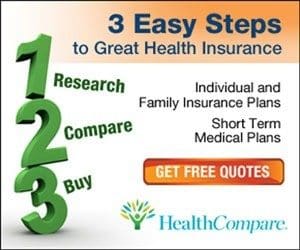
- Our Quote Engine Takes all the complexity out of using pencil and paper to figure out the premiums per the Obamacare/ACA rules under CFR §1.36B-3 *
- We are authorized Brokers for Dental, Vision & Covered CA get instant quotes direct and in Covered CA with subsidy calculation for:
- Watch our 10 minute VIDEO that explains everything about getting a quote
Reporting Loans from Friends & Family to Credit Bureau’s
Google AI
Steps to make a private loan reportable
- Find a reporting service: Research and select a reputable third-party loan servicing company that reports payments to credit bureaus. Examples of such services include those formerly provided by CircleLending and Multi-Financial Services Company.
- Compare costs: Servicing fees for these companies can vary, with some starting at around $10 to $15 per month.
- Check reporting frequency: Confirm with the service which credit bureaus (Equifax, Experian, and TransUnion) they report to and how often they report. [2, 3, 4, 5, 6]
- Draft a formal contract: Create a formal, written loan agreement with the private lender. Include all essential details, such as the loan amount, interest rate, repayment schedule, and consequences of non-payment.
- Document everything: Record all payments made. The loan servicing company will require verifiable documentation to report accurate information to the credit bureaus. [2, 7, 8, 9, 10]
- Provide documentation: Submit the signed loan agreement and any proof of payment to the loan servicing company.
- Register the loan: Register your private loan with the service. They will manage the collection process and handle the formal reporting to the credit bureaus. [2, 11, 12, 13]
- Submit payments to the servicer: Continue making timely payments, directing them to the loan servicing company as instructed.
- The servicer reports to bureaus: The service will then accurately and regularly report your payments to the credit bureaus, where they will appear as a “tradeline” on your credit report. [14, 15, 16]
What to know before reporting a private loan
- Credit bureaus are not obligated to report: Even if you follow all the steps, a credit bureau is not obligated to include private mortgage information in your report.
- Reporting is not guaranteed: The lender must be willing to cooperate with the loan servicing company to set up the arrangement. If they refuse, you cannot force them to report.
- Private lenders typically do not report: Most private individuals do not have the technical setup or business criteria to become a data furnisher for the bureaus.
- Alternative methods exist for demonstrating creditworthiness: If you cannot get the loan reported, you can still present a prospective lender with evidence of the loan and your consistent payment history when applying for credit in the future. [2, 17, 18, 19, 20]
Medical Debt & Bankruptcy
Medical Debt & Bankruptcy
100 Million People in America Are Saddled With Health Care Debt KHN 6.16.2022 NPR White House seeking to ease Medical Debt read more
- Medical bankruptcy: What it is, what it means, and why it’s so common in the United States
- suze-ormans-advice-on-how-to-reduce-medical-debt
- Patient medical debt would be wiped out under a plan pitched by federal lawmakers. The “Medical Debt Cancellation Act” would create a grant program for the U.S. Department of Health and Human Services (HHS) to pay off hospitals, and later physicians and other health care providers. Read More
- CA bans Medical Debt from showing on Credit Reports
- Changes At CFPB May Upend Efforts To Ban Medical Debt From Credit Reports Kff.org *
- How to Get Rid of Medical Debt — Or Avoid It in the First Place Kaiser Health News 7.1.2022
- Dealing with Medical Debt: Consumer Advice from NCLC
- How to get rid of medical debt — or avoid it in the first place NPR
-
RIP Medical Debt.org “Charity?” Complaints? that buys out Medical Debt with donations from generous people
- ‘Sobering’ study finds nearly no benefits from medical debt relief efforts
- Wikipedia on RIP
- Charity Navigator
- Nomi Health is teaming with charity RIP Medical Debt to pay off $225 million in overdue medical bills for 176,000 Americans. Read More CBS News
- After Wiping Out $6.7 Billion in Medical Debt, This Nonprofit Is Just Getting Started KHN
- california health line.org/los-angeles-county-medical-debt-plan
- Bible Tradition – Good Deed to give a loan – Chabad.org
- a hospital must negotiate with a patient regarding a payment plan, taking into consideration the patient’s family income and essential living expenses. Senate Bill No. 1276
- CA Hospital Fair Pricing Act prohibits hospitals from charging eligible patients more for care than they could charge Medicare. In most cases, this will be 65-85% less than the non-discounted price.
- What is your ability to pay a higher deductible or any deductible and co pay?
- Get a Instant Health Covered CA quote quotit.net/
- medical-loss-ratio-mrl/
- Our MAIN Webpage on Medical Debt
- CNN 4.11.2022
- NPR – what medical debt took from people
- She Almost Died. The $250K Debt Took Their House
- Denied Care for a Dangerous Infection Because of Past-Due Bills
- Biden’s Band Aid… Read More
- The untold burden of healthcare debt Medical costs quietly upend lives to a greater extent than has been tallied LA Times
- 100 million adults have health-care debt — and 12% of them owe $10,000 or more CNBC
- techtarget.com/HHS-Investigates-Medical-Credit-Cards-Installment-Loans
- Consumer Watchdog Spotlights Illegal Medical Debt Collection Tactics
- How Medical Debt Makes People Sicker — and What We Can Do About It
COVID-19 Pandemic Did Not Impact Medical Debt Among Americans Despite causing job and insurance losses, the COVID-19 pandemic did not negatively impact medical debt, likely due to temporary premium subsidies – ARPA and a decline in elective healthcare. Read More: Rev cycle intelligence.com *
See the pamphlets below and on the right or scroll down and this CBS News VIDEO 5.19.2022 if you need assistance with Medical Debt, Bankruptcy or how loan or debt forgiveness might affect your MAGI income for Covered CA.
10 statistics and findings on medical debt.
Please note that a lot of the information below is Pre-Health Care Reform
1. One in five working-age Americans with insurance encountered problems paying medical bills in the past year, which often led to serious financial challenges and changes in employment and lifestyle, according to a comprehensive Kaiser Family Foundation/New York Times survey. Among the uninsured, 53 percent reported problems paying medical bills.
Here’s an article about a family making $100k who struggle with the $12k Out of Pocket Maximum OOP in CA Healthline 1.14.2019. Think of what their debt might be if there wasn’t an OOP?
2. Among those facing problems paying medical bills, almost identical shares of the insured (44 percent) and uninsured (45 percent) said the bills had a major impact on their families.
3. Of insured individuals who reported problems paying medical bills, 26 percent received unexpected claim denials; and 32 percent received care from an out-of-network provider their insurance wouldn’t cover.
4. Among those with private insurance, those enrolled in higher deductible plans were more likely to report medical bill problems than those in plans with lower deductibles (26 percent compared to 15 percent).
5. Among the insured and uninsured with medical bill problems, 31 percent said the total amount of the bills they had problems paying reached at least $5,000, including 13 percent who say the total hit at least $10,000. One in four (24 percent) said their bills totaled less than $1,000.
6. Thirty-one percent of insured Americans took money out of retirement, college or other long-term savings accounts to pay medical bills in the past year; 17 percent of uninsured reported the same. An additional 17 percent of insured and 11 percent of uninsured patients took out another type of loan to pay medical bills.
7. Although more than 90 percent of patients reported satisfaction with their primary care physician across several categories in a survey commissioned by the Physicians Foundation, many communicated concern regarding healthcare costs and medical debt.
8. According to the survey, 62 percent of participants reported concern regarding their ability to pay for medical care if they were to fall ill or become injured. More than a quarter — 28 percent — reported skipping a medical test, missing a follow-up appointment or not seeking treatment for a medical problem in the last year due to insecurities regarding the cost of care.
9. Medical debt is sold very cheap because it is difficult to collect on. Craig Antico, co-founder of RIP Medical Debt, a nonprofit based in Rye, N.Y., told STAT a dollar of debt can be bought for less than a cent. “It only takes $14.45 million to abolish $1 billion in debt,” he said. Here’s another article on RIP’s methods, but I don’t really understand it… Modern Health Care
10. Men and women in the armed forces are nearly twice as likely to file complaints about debt collection than the general population, according to a report from the Consumer Financial Protection Bureau. Of the roughly 19,200 complaints from servicemembers the CFPB received last year, about 8,900 were related to debt collection. In 2015, medical debt concerns comprised 13 percent of servicemember debt collection complaints, with a majority of the medical debt complaints coming from the veteran population. https://www.beckershospitalreview.com/finance/10-statistics-and-findings-on-medical-debt.html *
*************************************
The percentage of U.S. residents who have difficulty paying medical bills declined from about 22% in September 2013, before the Affordable Care Act fully took effect, to about 17% in March 2015
In 2001, 1.458 million American families filed for bankruptcy. About half of debtors cited medical causes,… Among individuals whose illness led to bankruptcy, out-of-pocket costs averaged $11,854 since the start of illness; 75.7% had insurance at the onset of illness. Medical debtors were 42% more likely than other debtors to experience lapses in medical coverage. Even middle class, insured families often fall prey to financial catastrophe when sick.
The average debtor was a 41 year old woman with children, and at least some college education. Most debtors owned homes; their occupational prestige scores place them predominantly in the middle or working classes.
Medical debt was also associated with mortgage problems.
Medical debtors reported particular problems paying mortgages/rent and utilities (Exhibit 4). Although our interviews occurred soon after the bankruptcy filings (7 months, on average) many debtors had already been turned down for jobs (3.1% of debtors), mortgages (5.8%), apartment rentals (4.9%) or car loans (9.3%) because of the bankruptcy on their credit reports.
Illness begot financial problems both directly – due to medical costs – and through lost income. 59.9% of families bankrupted by medical problems indicated that medical bills (i.e. from medical providers) contributed to bankruptcy; 47.6% cited drug costs; 35.3% had curtailed employment due to illness – often (52.8%) to care for someone else. Many families had problems with both medical bills and income loss.
Disability and Supplemental plans
Families bankrupted by medical problems cited varied, and sometimes multiple, diagnoses. Cardiovascular disorders were reported by 26.6%; trauma/orthopedic/back problems by nearly one-third; and cancer, diabetes, pulmonary or mental disorders, and childbirth-related and congenital disorders by about 10% each. 51.7% of the medical problems involved ongoing chronic illnesses.
The co-occurrence of medical and job problems was a common theme. For instance one debtor underwent lung surgery and suffered a heart attack. Both hospitalizations were covered by his employer-paid insurance, but he was unable to return to his physically-demanding job. He found new employment, but was denied coverage due to his pre-existing conditions
(I don’t think this is correct click and view our COBRA page – Also see our Pre-X page and check out the guarantees on Employer Provided coverage.
which required costly ongoing care. Similarly, a school-teacher who suffered a heart attack was unable to return to work for many months, and hence her coverage lapsed. A hospital wrote off her $20,000 debt, but she was nonetheless bankrupted by doctor bills and the cost of medications. even brief lapses in insurance coverage may be ruinous and should not be viewed as benign.
Steve’s Note – This would be a reason to have your premiums paid AUTOMATICALLY from your checking account or credit card automatic payments even good employment-based coverage sometimes fails to protect families because illness may lead to job loss and the consequent loss of coverage.
Check COBRA, Cal COBRA 36 Months, HIPAA (pre health Care Reform), Temporary Plans and of course Private Coverage
Lost jobs, of course, also leave families without health coverage when they are at their financially most vulnerable. View entire article PNHP Study Summary page – I don’t agree with them though
Five Mistakes that Will Land You in Medical Debt, written by Elizabeth Cohen, CNN’s Medical News correspondent. Highlights of the story include:
-
A 2007 report stating that 28 percent of the population is paying off medical debt.
-
How medical debt usually happens quickly and is a surprise to many.
-
How agencies can help you negotiate with providers and insurance companies.
Furthermore, Cohen highlights the FHCE’s tools and services eligibility quiz, state-by-state guide of health care choices and 24-hour helpline as resources to those who currently do not have insurance. To take advantage of our online tools and services we provide, please visit our Web site, www.Coverage For All.org. It is a rich and educational resource designed for consumers, agents and organizations alike.
Illness often leads to financial catastrophe through loss of income, as well as high medical bills. Hence, disability insurance and paid sick leave are also critical to financial survival of a serious illness.
Posting on another agent’s website about repairing Medical Debt insure me kevin.com
#Advocates Guide to Surprise Medical Bills
- Hidden Cost of Surprise Medical Bills 3.3.2016 Time Magazine
- heart bypass surgery, replacement of one valve and repair of another. raging infection that required powerful IV antibiotics to treat. spent a month in the hospital, some of it in intensive care, before she was discharged home.
- surprise: Bills totaling more than $454,000 for the medical miracle that saved her life. Of that stunning amount, officials said, she owed nearly $227,000 after her health insurance paid its part. Time.com 3.21.2019 *
- heart bypass surgery, replacement of one valve and repair of another. raging infection that required powerful IV antibiotics to treat. spent a month in the hospital, some of it in intensive care, before she was discharged home.
- Newscast about Hospitals being required to post rates - charges VIDEO
- PBS Trump Price Transparency Executive Order VIDEO
- Our webpage on Balance Billing & No Surprises
- Americans often "forced" to pay medical bills they don't owe, feds say CBS News
- Colorado's Supreme Court has ruled in favor of a woman who expected to pay about $1,300 for spinal fusion surgery but was billed more than $300,000 by a suburban Denver hospital that allegedly included charges it never disclosed she might be liable for. Read more: CBS News 5.19.2022
- What the Federal ‘No Surprises Act’ Means in California
- CA Department of Insurance Summary
FAIR Debt Collection Practices Act
- attorney general.gov/fair-debt-collection-practices/ Pennsylvania
- debt.org/fair-debt-collection-practices-act/
- nolo.com/california-fair-debt-collection-laws
- consumer finance.gov/laws-that-limit-what-debt-collectors-can-say-or-do
- law.cornell.edu/fair_debt_collection_practices_act
- ftc.gov/fair-debt-collection-practices-act-text
- Todd Friedman, Esq Fair Credit Reporting Act Violations
- Medical Debt will no longer appear on credit reports KHN.org
- CNBC
Links & Resources
Medical Debt
- WebMD on Medical Bankruptcy
- American’s borrow a ton of $$ to pay for Health Care New York Times
- Bloomberg.com 11.13.2018 Rising Premiums – Families must decide which members to keep insured.
- A GUIDE TO MEDICAL DEBT: YOUR RIGHTS AND OPTIONS
- A [Suicide] Survivor’s Guide to Medical Debt
- Nolo – Bankruptcy
- 2007 Six Page Study American Journal of Medicine
- debtors anonymous.org
- Our webpage on Medi Cal Share of Cost
- Hollywood Presbyterian Charity Care and Discount Payment Plan
- Mandate for Covered CA to enroll you when you make too much $$$ for Medi Cal SB 260
- Debt Collectors can now email and text you LA Times 12.24.2021 *
- Cancer Patients Endure Debt on Top of Disease
- Op-Ed: The debt crisis that sick Americans can’t avoid
- Healthcare Often Forces Patients to Make Financial Sacrifices
- stl today.com/traumatic-brain-injury-and-500k-in-medical-debt
- Office of Health Care Affordability (OHCA)
- Hundreds of Hospitals Sue Patients or Threaten Their Credit, a KHN Investigation Finds. Does Yours?
- kff health news.org/diagnosis-debt-investigation-faces-of-medical-debt
Introductory Zero Interest Credit Cards
- Debt reduction: You can transfer existing high-interest debt to the new card, saving money on interest charges and paying down the principal faster.
- Improved credit utilization: A new card increases your total available credit, which can lower your credit utilization ratio, a key factor in credit scores.
- Improved cash flow: A zero-interest period can be beneficial for large purchases you want to pay off over time without interest. [1, 2, 3, 4, 5, 6]
- Credit score challenge: It can be difficult to qualify for a zero-interest card with a poor credit score. Applying for a new card will also create a hard inquiry, which can temporarily lower your score.
- Balance transfer fees: Most balance transfer cards charge a fee, typically 3% or 5% of the amount transferred, which adds to your total debt.
- High interest rate after the intro period: Any balance remaining after the promotional period expires will be charged at the card’s high standard interest rate.
- Ongoing payments are still required: You must continue to make on-time minimum payments to avoid fees and further damage to your credit score.
- Risk of opening more debt: Using the new card for new purchases could lead to more debt, which is risky if you can’t pay it off before the interest-free period ends. [1, 2, 5, 7, 8, 9]
- Good credit: A score of 670-739 is often the minimum threshold for many American Express cards.
- Very good credit: A score of 740-799 will significantly increase your chances of approval.
- Excellent credit: A score of 800 or higher puts you in the best position for approval and potentially the best terms. [1, 2, 3, 5]
- Payment history: A history of on-time payments is a critical factor.
- Income: Your reported income is part of the evaluation.
- Debt: Your overall debt is also reviewed.
- Number of cards: The total number of American Express cards you have can affect your eligibility. [6, 7]
#Bankruptcy – Foreclosure
- You are are required to do pre bankruptcy credit counseling before you file for bankruptcy US Courts
- us courts.gov/chapter-13-bankruptcy-basics
- nolo.com/chapter-13-bankruptcy-overview
- wikipedia.org/Chapter_13
- FORECLOSURE INFORMATION FOR HOMEOWNERS DRE 909 short 2 pages

- A HOMEOWNER’S GUIDE TO FORECLOSURE IN CALIFORNIA DRE # 15

- dre.ca.gov/Fraud Brochure

- dre.ca.gov/financial sense to white picket fence
- Reverse Mortgage?

- dre.ca.gov/Complete List Publications
How might waste and fraud cause #premiums to go up?
Hospital Billing Inconsistencies?
The difference between the Hospital’s Price and Negotiated fees that I have seen on EOB’s (Explanation of Benefits) have often looked ridiculous. Here’s more information from another angle.
Billing Codes – Satire or how it really works?
Hospital Fair Pricing Act Low Income Uninsured Get Discounts!
Excerpts from LA Times 5.28.2012
- The cash discounts evolved over time after hospitals were criticized in recent years for charging the uninsured their highest rates and then hounding them at times with overzealous collection efforts.
- Many hospitals and physicians offer steep discounts for cash-paying patients regardless of income. But there’s a catch: Typically you can get the lowest price only if you don’t use your health insurance.
- It frustrates people because there’s no correlation between what things cost and what is charged
- Health insurance still offers substantial value for consumers by providing preventive care at no cost and offering protection from major medical bills that could bankrupt most families
Resources & Links
- The Atlantic.com 9.7.2012 Fraud
- ICD 10 Codes find a code.com dr chrono.com
- icd9 data.com/
- Our Webpages on:



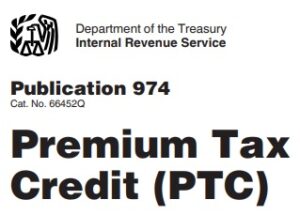


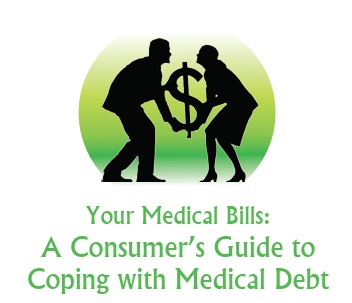
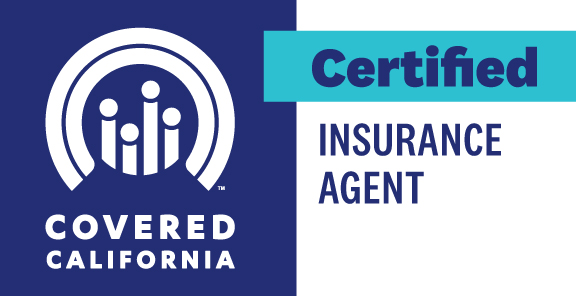

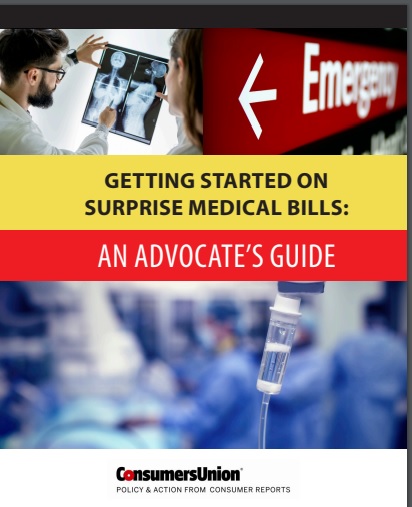

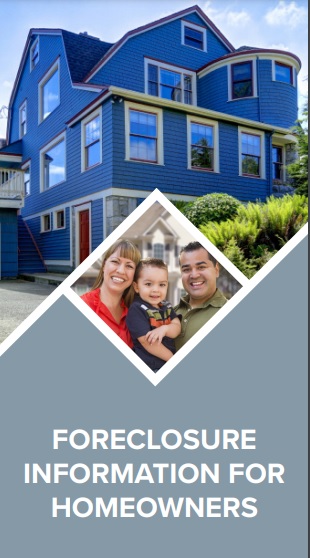
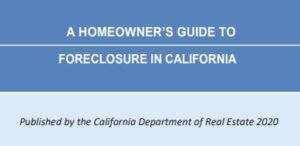


https://www.beckershospitalreview.com/finance/new-jersey-eliminates-86-million-in-medical-debt/